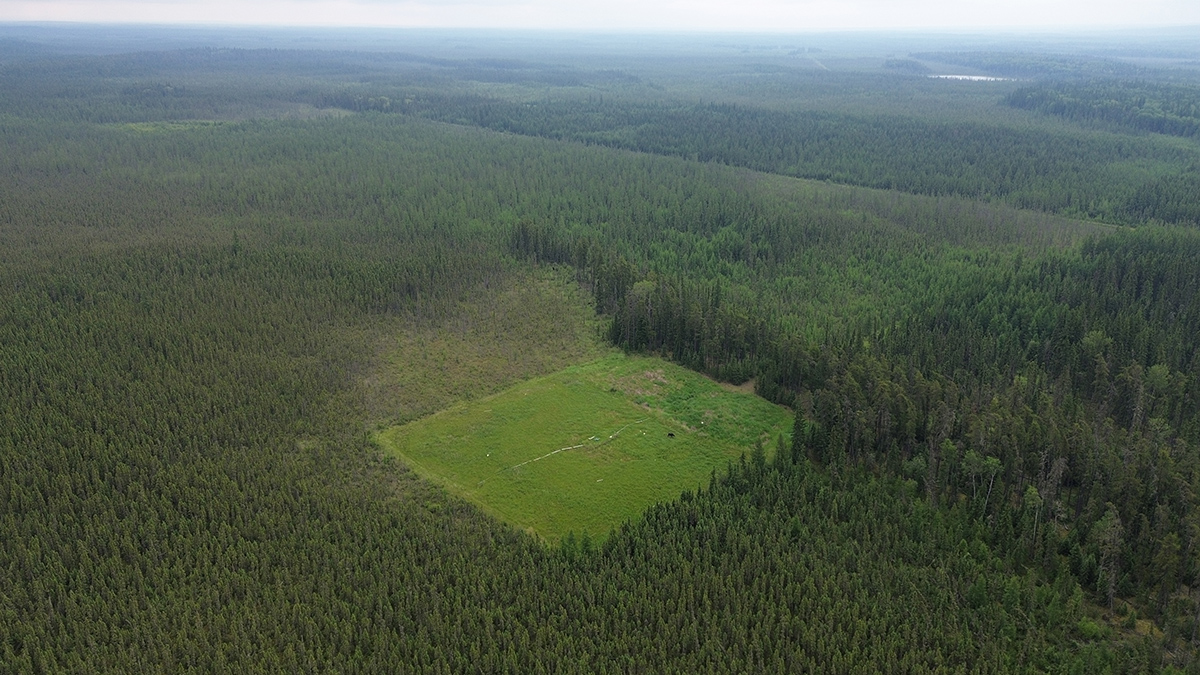Boreal peatlands in Canada provide crucial ecosystem services, from flood mitigation and water purification to storing colossal amounts of carbon and providing a habitat for species such as caribou.
Over the past several decades, more than 36,000 hectares of well pads have been constructed to house oil and gas drilling platforms in these landscapes, destroying the underlying vegetation and disrupting the flow of water through the ground.
“We want to get as close to the original state as is possible and realistic.”
Once drilling operations are finished, operators are required to return pads to a state similar to that before construction. Though restoration efforts have historically focused on tree planting, reintroducing the right mosses is crucial for restoring functional peatlands. A study in Ecological Engineering outlines a new approach to reintroduce these keystone plant species, tested for the first time at the scale of a full well pad in Alberta, Canada.
“We want to get as close to the original state as is possible and realistic, given the very long time scales that peatlands develop over,” said Murdoch McKinnon, a graduate student at the University of Waterloo and lead author of the study.
The challenge is providing the right hydrological conditions for mosses to thrive.
Removing Fill
Well pads are constructed by heaping crushed mineral fill onto a section of peat to create a harder level surface.
Traditionally, researchers in the region have reintroduced moss by first completely removing the fill, which lowers the surface so that it is closer to the water table. In some cases, they would bury some of the fill under the newly exposed peat, a technique referred to as inversion.
This process has been successful in establishing the Sphagnum mosses typical of bogs, which have acidic soil that is low in nutrients. It’s been less successful in reintroducing the Bryopsida mosses characteristic of fens, the nutrient-rich wetlands that make up almost two thirds of peatlands in Canada’s Western Boreal Plain.
“I think it’s a good approach, but maybe the surface of the pad was not low enough to have flowing water, which you need in a fen.”
To reestablish a moss community that could eventually turn into a fen, the team left some of the fill on the surface, which provided the minerals that Bryopsida mosses rely on for growth. The team then roughed up the surface with an excavator to create different microsites, which promotes species diversity.
After introducing mosses from a nearby donor fen and closely monitoring the site for two growing seasons, researchers found that conditions for the reestablishment of Bryopsida mosses were best when the water table was within 6 centimeters (2 inches) of the surface. That was often the case along the edges of the pad that received water from the adjacent peatland, whereas the mosses in the interior of the pad struggled with drier conditions.
“I think it’s a good approach, but maybe the surface of the pad was not low enough to have flowing water, which you need in a fen,” said Line Rochefort, an expert in peatland restoration at Université Laval in Quebec who was not involved in the study.
“Without addressing that, it’s hard to introduce and establish peatland vegetation on mineral substrate,” said Bin Xu, a peatland ecologist at the Northern Alberta Institute of Technology (NAIT) who worked on the project. “On the flip side, when you do have good hydrobiological conditions, it’s really easy to support peat-forming vegetation, which is encouraging.”

An important takeaway from the study is the importance of decompacting the surface by roughing it up to allow for not only hydrological flow across the pad but also the natural vertical fluctuation of the water table, Xu said.
He and colleagues at NAIT have now applied these lessons to three additional well pads in Alberta, and industry experts have used a similar approach on around a dozen more, Xu said. “Through informing policy and sharing the learnings with industry, we can together address the need to reclaim well pads built in peatland across the province.”
—Kaja Šeruga, Science Writer

